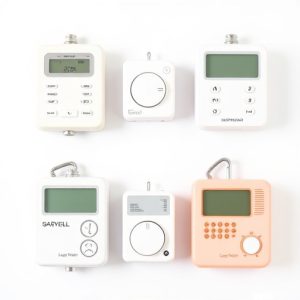Personal Alarm With Remote Activation: Enhancing Wearable Security Systems
Wearable security systems, including devices with remote-activated personal alarms, GPS tracking, mo…….
Wearable security systems, including devices with remote-activated personal alarms, GPS tracking, motion sensors, and fall detection, offer innovative personal protection. These compact devices, resembling smartwatches or fitness trackers, provide peace of mind in emergencies, empowering users for safety both personally and professionally. A Personal Alarm With Remote Activation is a powerful tool for solo travelers and those in remote areas, enabling discreet distress signals to pre-selected contacts or emergency services. For optimal use, ensure proper fitting, easy accessibility, clear visibility, and pairing with compatible apps. Safety tips include understanding device activation, practicing emergency procedures, testing range and signal strength, keeping emergency contacts readily available, and planning usage in various scenarios.
In today’s world, personal safety is paramount. Wearable security systems equipped with panic features offer a revolutionary way to protect yourself. This article explores the essentials of these innovative devices, focusing on their core functionality and benefits. We delve into the specifics of a personal alarm with remote activation, highlighting its life-saving potential. Additionally, we provide practical implementation tips and safety guidelines for leveraging wearable panic devices effectively. Stay informed, stay safe.
- Understanding Wearable Security Systems: The Basics
- Personal Alarm With Remote Activation: Features and Benefits
- Implementation and Safety Tips for Wearable Panic Devices
Understanding Wearable Security Systems: The Basics
Wearable security systems are innovative devices designed to offer personal protection and peace of mind, especially in situations where an individual may need rapid assistance or notification of potential danger. At their core, these systems typically consist of a compact, wearable device—often resembling a smartwatch or fitness tracker—that is equipped with various safety features. One of the key functions is the ability to trigger a personal alarm with remote activation, allowing users to signal for help in emergencies.
These devices are crafted with versatility and convenience in mind, often featuring not only panic buttons but also GPS tracking, motion sensors, and fall detection algorithms. The integration of these technologies enables wearers to stay connected, ensuring that assistance can be deployed swiftly when needed. Whether for personal safety or in specific work environments, wearable security systems provide a sense of empowerment and enhanced well-being.
Personal Alarm With Remote Activation: Features and Benefits
A Personal Alarm With Remote Activation is a powerful tool for personal safety, offering immediate assistance in emergency situations. This feature allows users to trigger an alarm from their wearable device or a connected app, sending out a distress signal to pre-selected contacts or emergency services. The benefit of remote activation lies in its discretion and convenience; individuals can discretely call for help without drawing attention to themselves.
This technology is especially valuable for people who frequently travel alone or those living in areas with limited accessibility to immediate assistance. With just a simple button press or app notification, a Personal Alarm With Remote Activation can disrupt potential threats and ensure prompt response from authorities, providing peace of mind and an added layer of security.
Implementation and Safety Tips for Wearable Panic Devices
Wearable panic devices, like personal alarms with remote activation, are small yet powerful tools for enhancing personal safety. When implementing these systems, it’s crucial to ensure proper usage and positioning. The device should be comfortably fitted, easily accessible, and clearly visible to attract attention if needed. Pairing the wearable alarm with a compatible app allows users to remotely activate the alarm from their smartphone, providing an extra layer of protection.
Safety tips include familiarizing yourself with the device’s activation mechanisms and practicing emergency procedures. Regularly test the alarm’s range and signal strength, ensuring reliable communication with your support network. Keep the contact details of emergency services and trusted individuals readily available. Additionally, consider scenarios where the alarm might be needed—public spaces, isolated areas, or during travel—and plan accordingly to maximize the device’s effectiveness in real-time situations.
Wearable security systems, particularly personal alarms with remote activation capabilities, offer a powerful tool for enhancing personal safety. These devices provide peace of mind by allowing users to quickly and discreetly alert others in case of emergencies. By understanding the basics and implementing safety tips, individuals can leverage the benefits of these innovative tools, ensuring their well-being in various situations. The integration of such technology into daily life could very well be a game-changer in personal safety measures.


